In the beauty world, hydrogen peroxide is the bleaching agent par excellence. It whitens hair, nails and teeth as well as having a host of household uses. I’ll expand more on the chemistry behind how it works in a later post, but it’s the practical use of hydrogen peroxide in teeth whitening that will be the focus of this post.
Safety
Tooth whitening can be done by dentists, in tooth whitening clinics and at home. Dentists use stronger products and are professionally trained to spot any potential problems, but are the most expensive; tooth whitening clinics also tend to use strong products but are less likely to be able to see any dental issues; DIY home kits are the cheapest option, and can have limits on the concentration of hydrogen peroxide allowed (a 6% limit was introduced in Australia this year) which means problems are less likely, but there aren’t any other safeguards unless you’ve been trained!
The consensus is that home tooth whitening kits are generally safe (especially if they’ve been approved by a reputable regulatory authority – in Australia that’s the ACCC), as long as you follow the instructions carefully. Using too much whitening agent or leaving it on for too long means you’re more likely to have side effects such as enamel damage, tooth sensitivity, and gum and throat irritation.
Active ingredients
Almost all whitening uses some form of hydrogen peroxide as the bleaching agent – in home kits, it’s usually carbamide peroxide, a more stable form which produces hydrogen peroxide when dissolved in water.
Some at-home kits (and many professional whitening services) use a light to “activate” the whitening agent. It doesn’t really seem to do much except sometimes dehydrate the teeth, which temporarily makes it look whiter (a few days or weeks).
There are a few different ways that at-home kits keep the hydrogen peroxide in contact with your teeth:
Trays – These can be one-size-fits-all, able to be moulded with heat, or custom-fitted to your teeth. The closer the fit, the better – you’ll need less product, it’ll be more comfortable, and less product will ooze out the sides into the rest of your mouth.
Adhesive strips – These are strips of flexible plastic which have whitening gel already on them. They are easier to handle, less bulky and adhere to your teeth. However, the strips are usually only designed to treat the front teeth (the most visible ones).
Dissolving adhesive strips – These are similar to regular adhesive strips, except they dissolve, leaving nothing to remove at the end. This is what I’ve been trying out lately. I own a few whitening kits at home, but they always seemed too fiddly for me to bother with so they’ve been sitting around unloved.
CleverWhite Dissolving Whitening Strips are basically long breath strips containing bound hydrogen peroxide. They wrap around your teeth and dissolve in about 10 minutes – they’re mint flavoured too so they freshen your breath at the same time. As an all-in-one product, they’re incredibly convenient – you can even take them with you in your handbag! They’re Europe’s most popular over-the-counter tooth whitening product, and I can see why.
CleverWhite Dissolving Whitening Strips retail at $29.95 for 42 strips and are available from leading pharmacies such as Priceline and Chemist Warehouse.
This product was provided for editorial consideration, which did not affect my opinion. For more information, see Disclosure Policy.
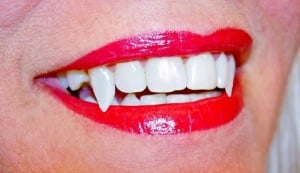
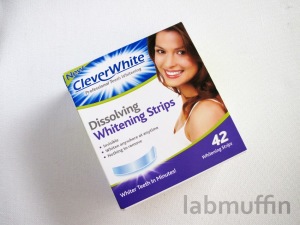
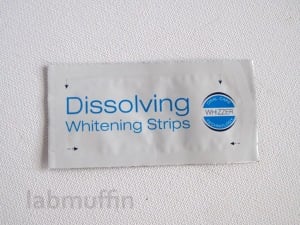


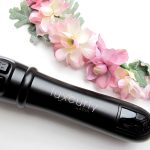

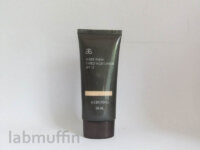

Have you noticed any lightening on your teeth? Would love to see a before and after!
Hmmm, I don’t know if you noticed, but your teeth are changing Michelle, I’m not going to invite you at night let alone a sleep-over 😉
Are those products really safe even for teens? Are they really effective? And isn’t it that hydrogen peroxides can cause sensitivity to the teeth?
Dental-Mart.com
Some great advice there, I personally recommend an initial visit to the dental hygienist for a really good clean and then whitening kits and toothpaste to compliment that. Once you’ve had that initial work done, keeping a bright white smile is much easier.
Everyone wants to have a beautiful smile and for that it is necessary that you should take care of your teeth and eat healthy food. Brushing your teeth properly will help you out in the treatment and you should brush your teeth after the meals you take. Flossing also helps in improved teeth and you can also use mouthwash for regular cleaning. The home remedies are used by many people and they are effective too, but for fast results in less time laser teeth whitening is used. Baking soda is also effective for teeth whitening. Hydrogen peroxide and baking soda mixture is also used for teeth whitening. One of the most popular treatments is laser teeth whitening. To know more about this laser treatment for teeth whitening you can have a look here at http://www.havanatherapy.com/teeth-whitening
How long does the whitening effect last?
Some really tips to whiten our teeth.
These are strips of flexible plastic which have whitening gel already on them. They are easier to handle, less bulky and adhere to your teeth.